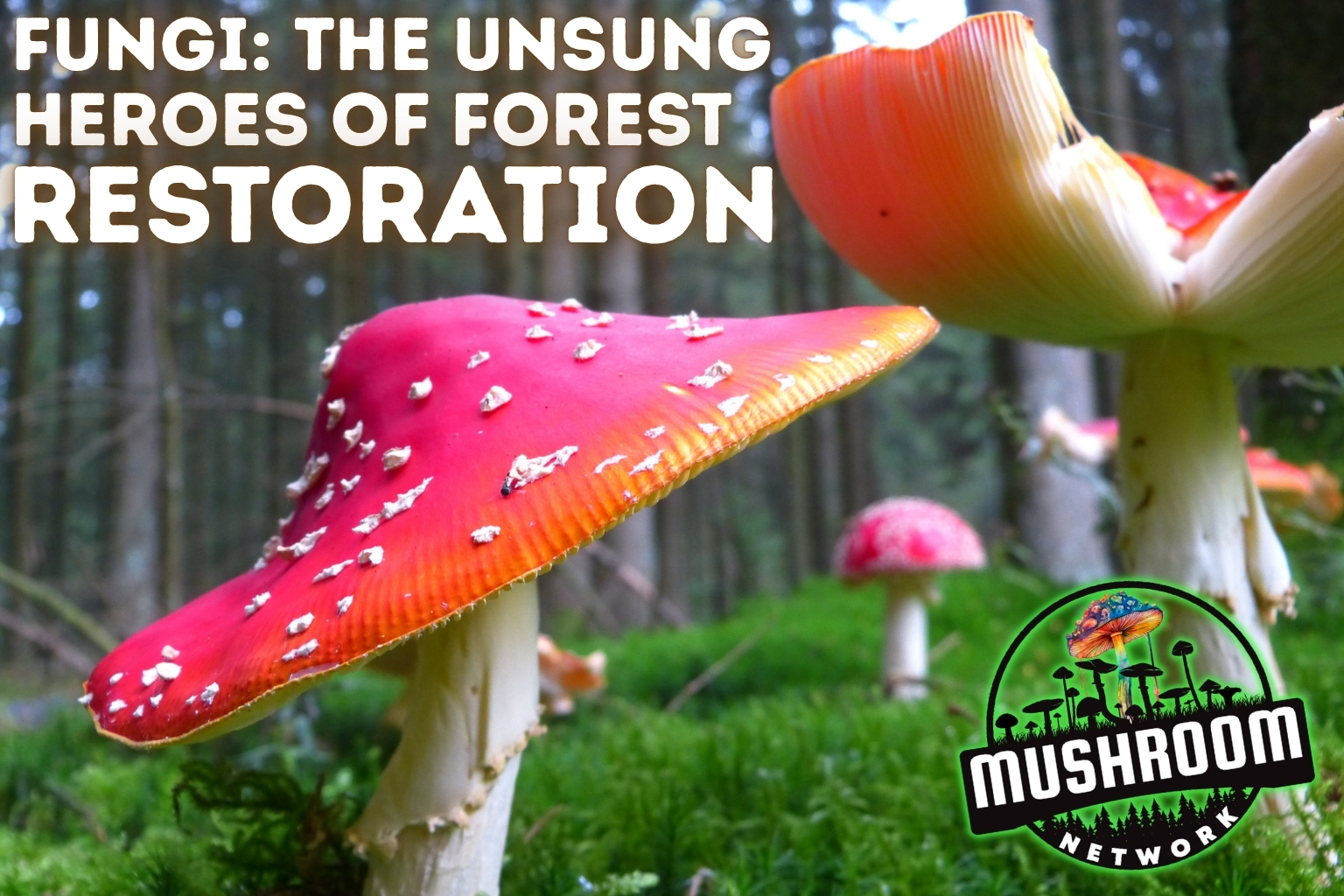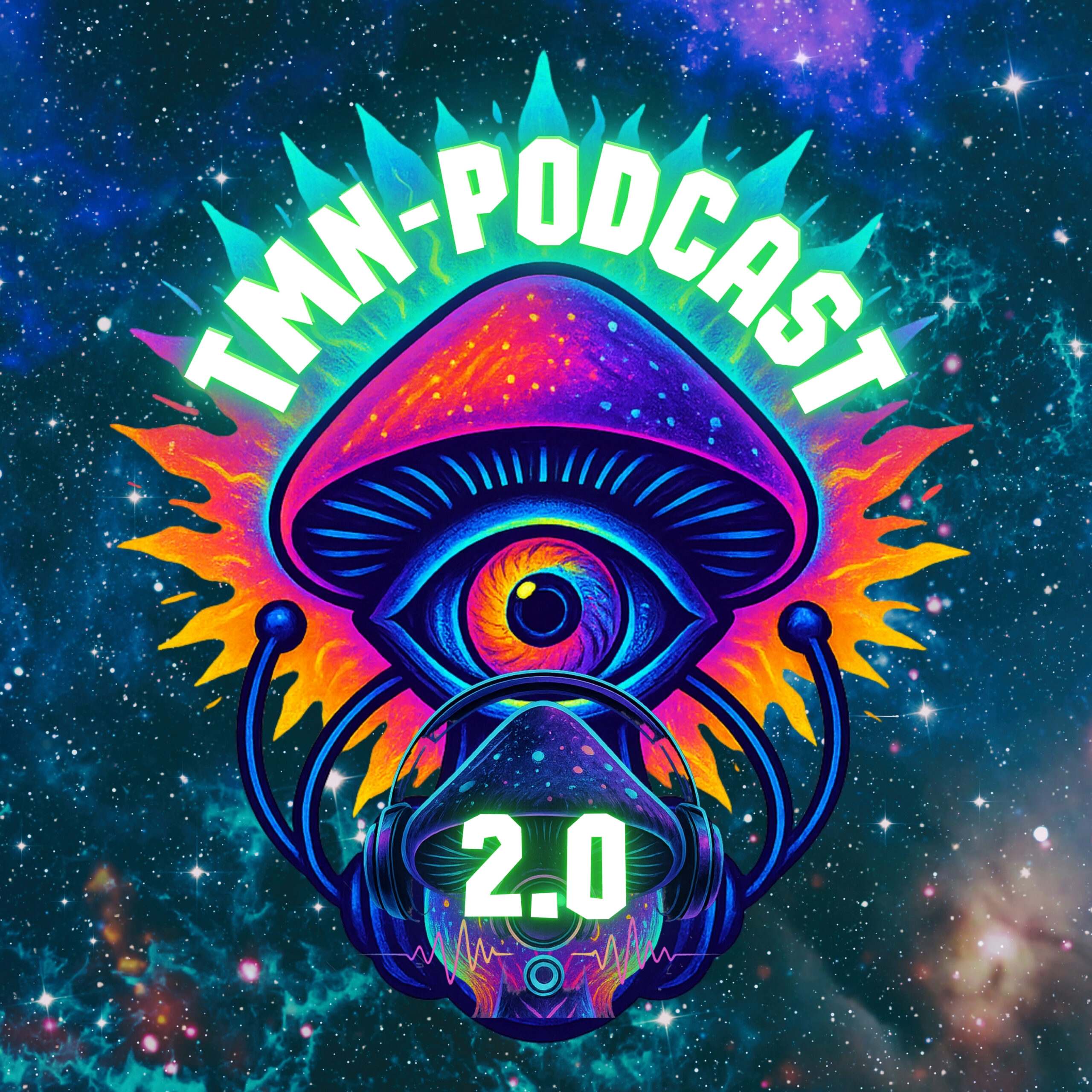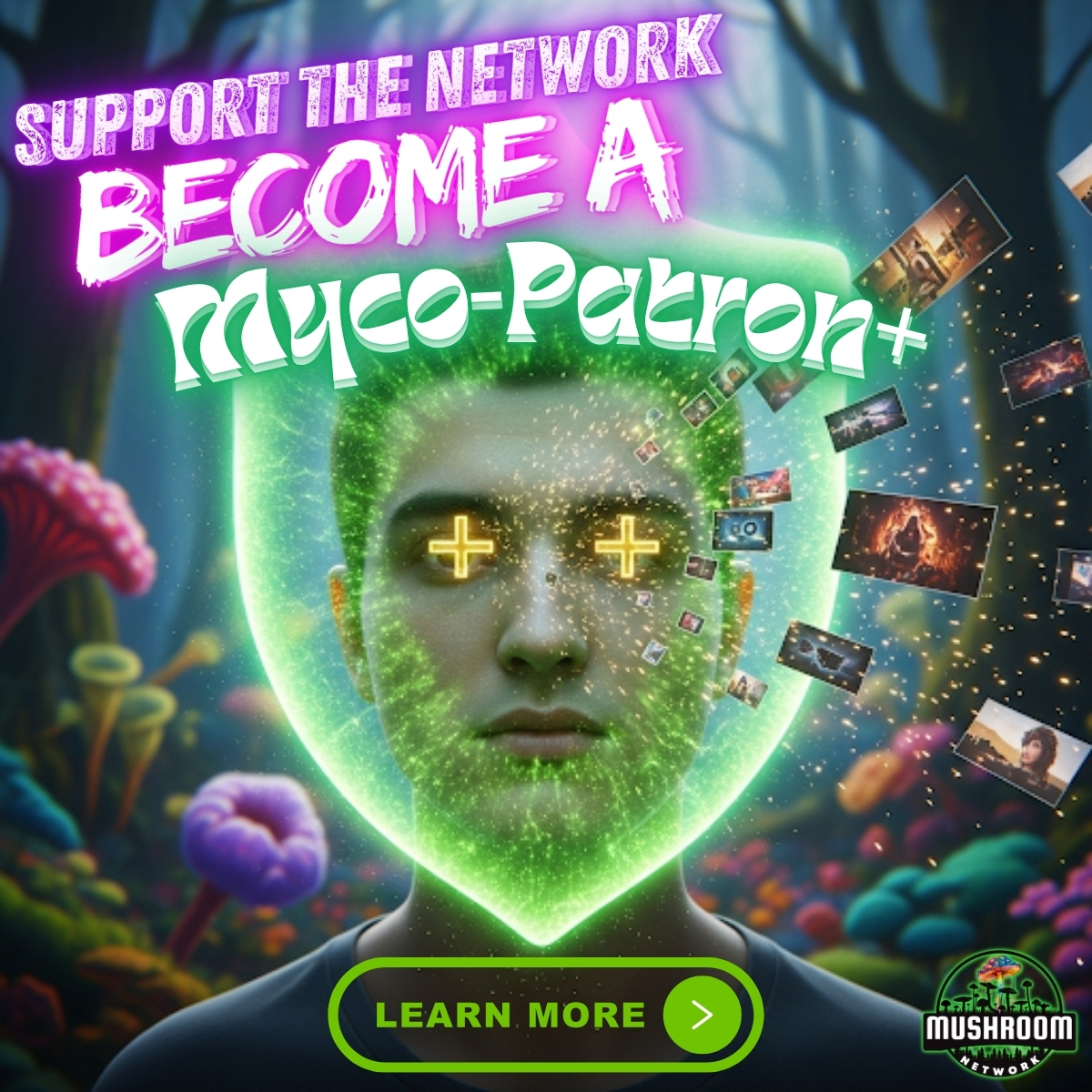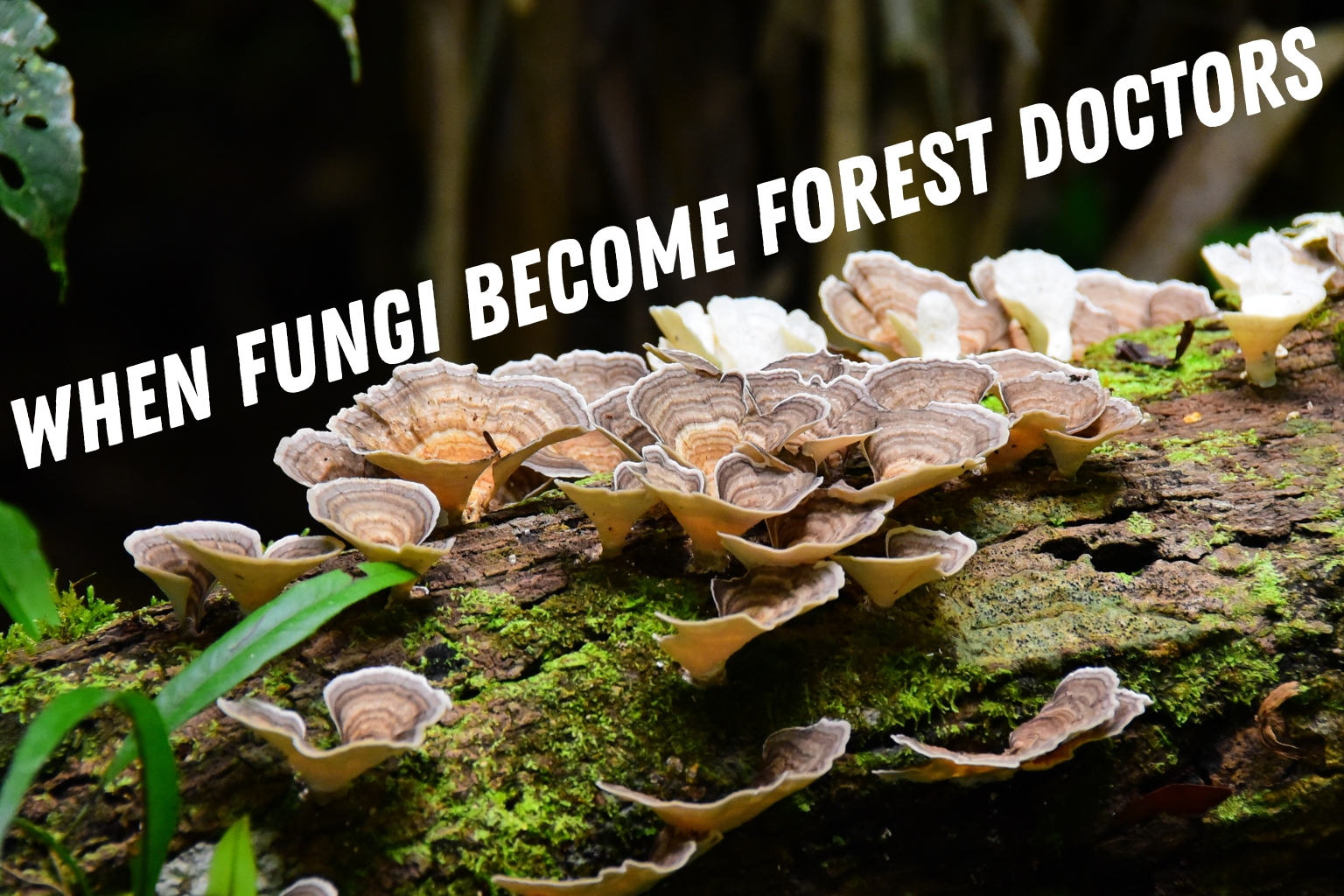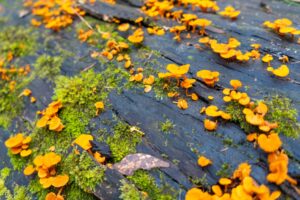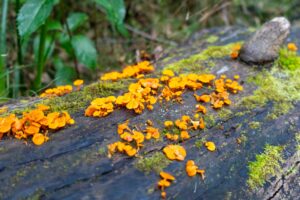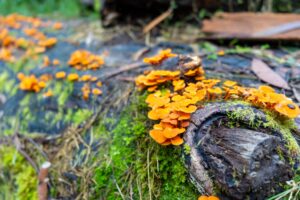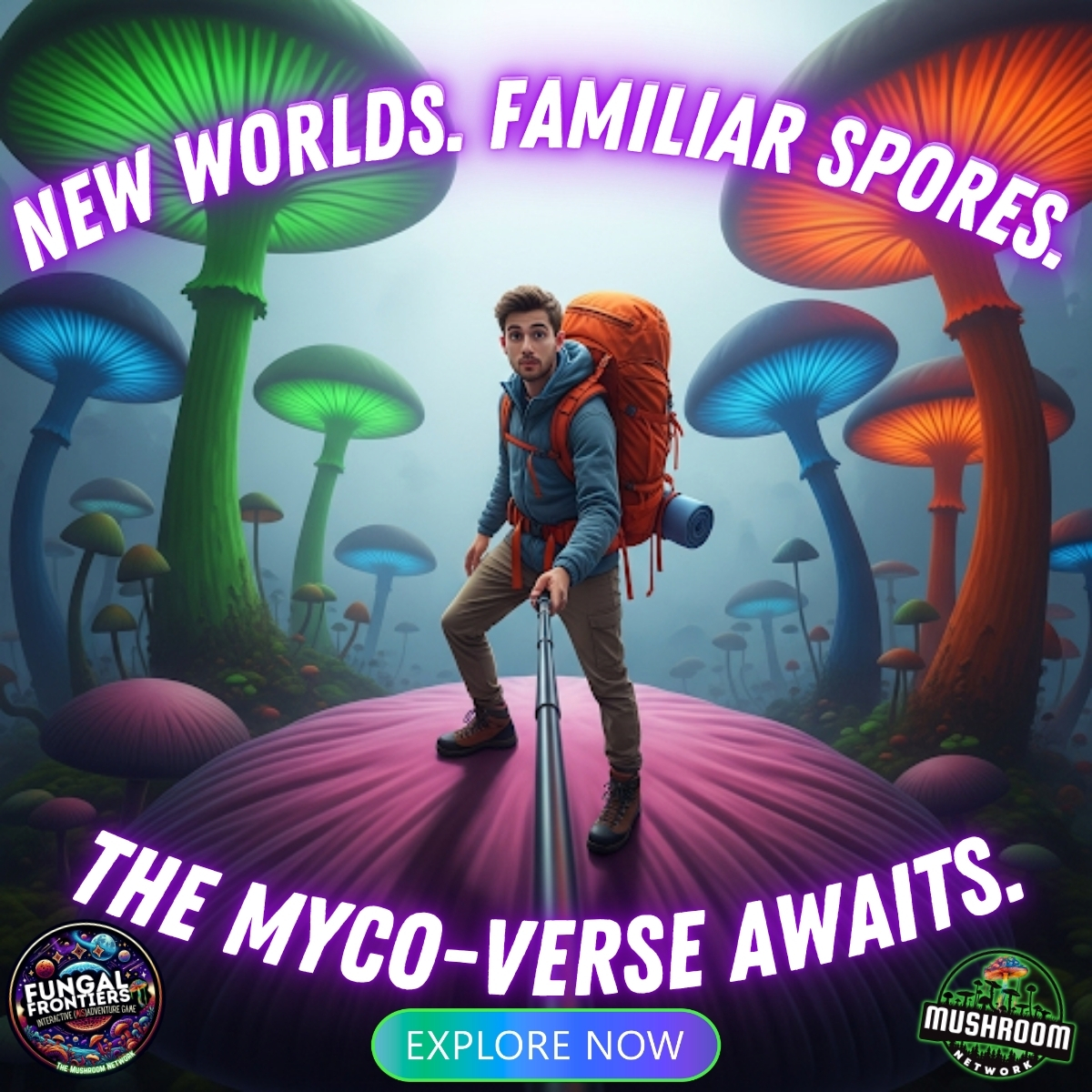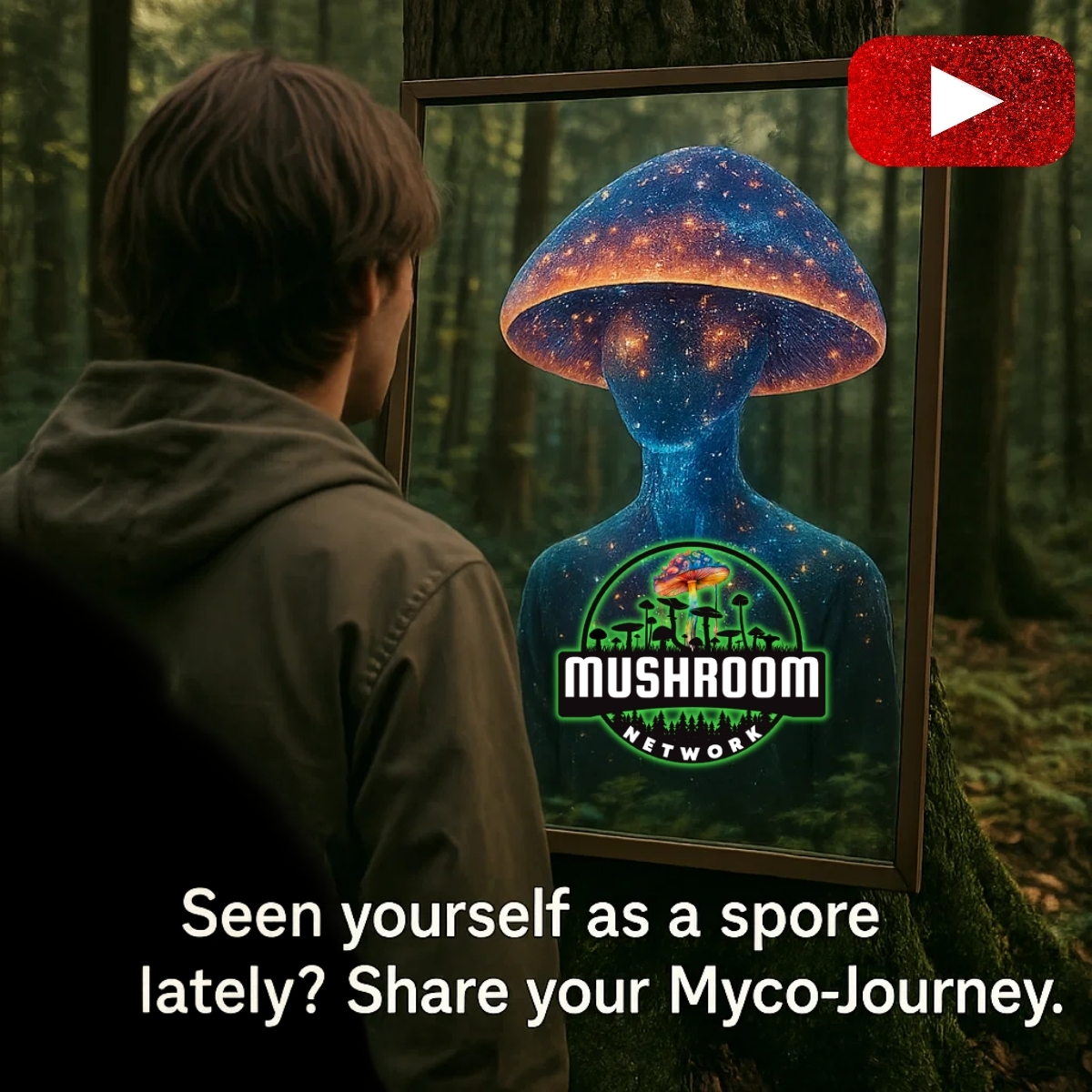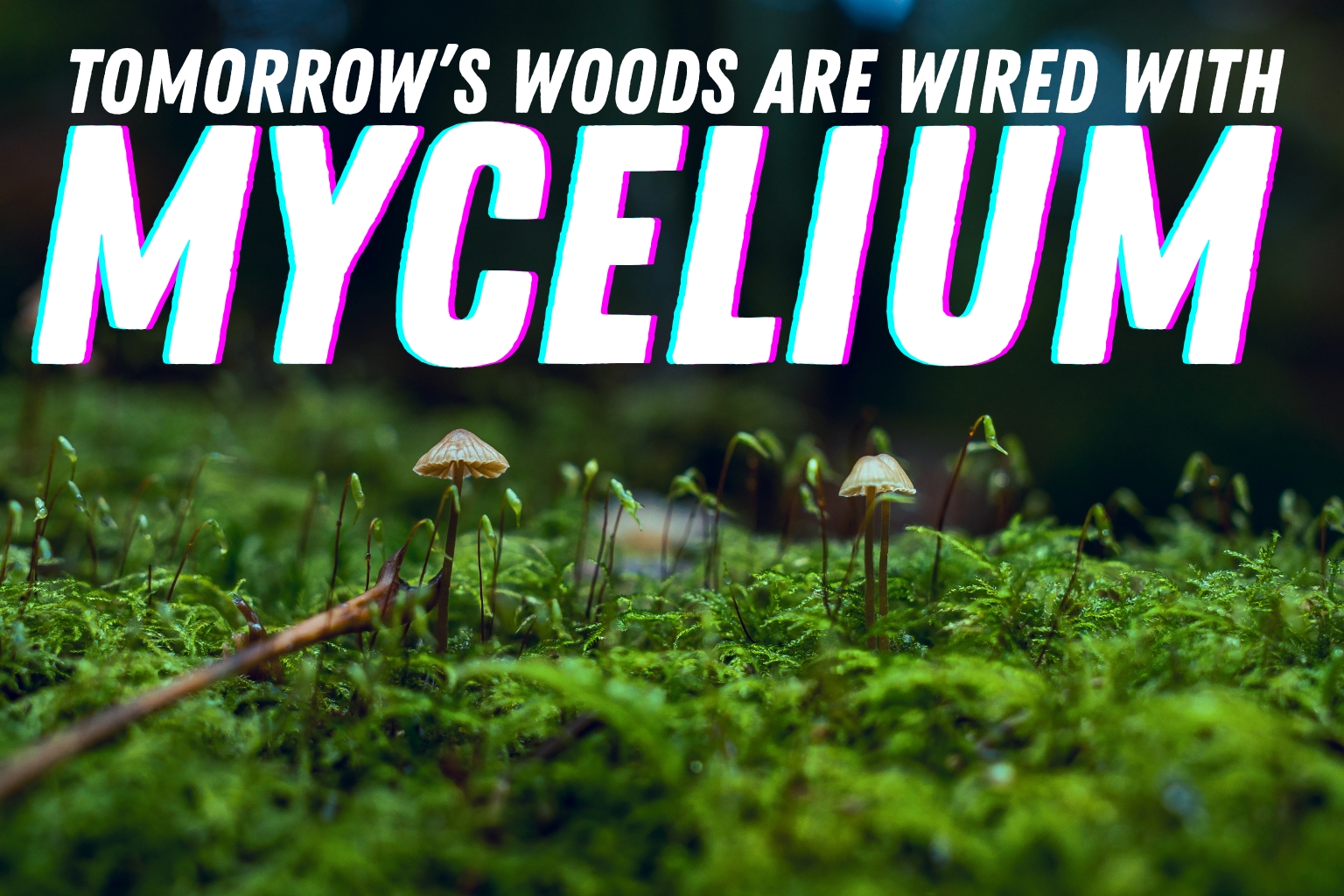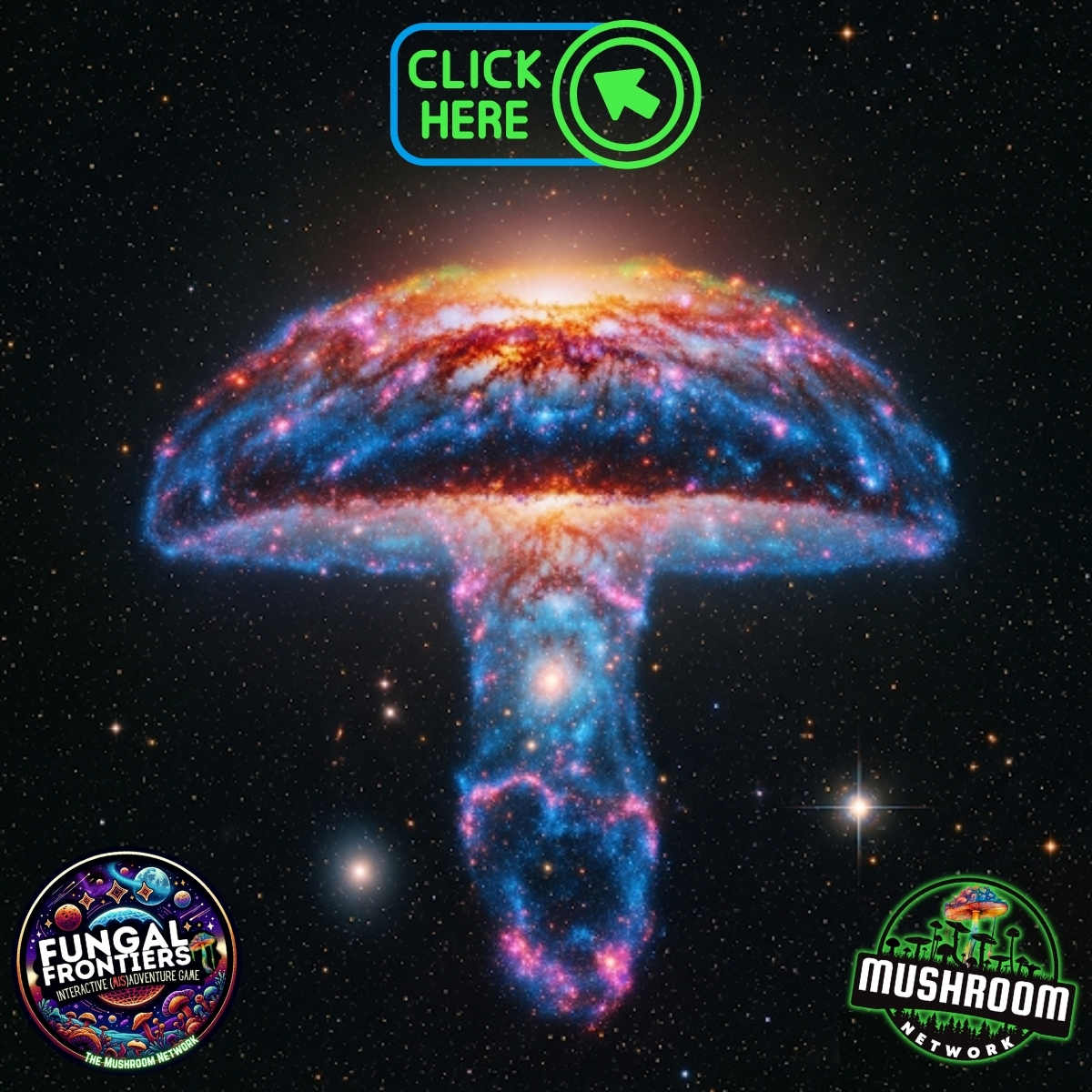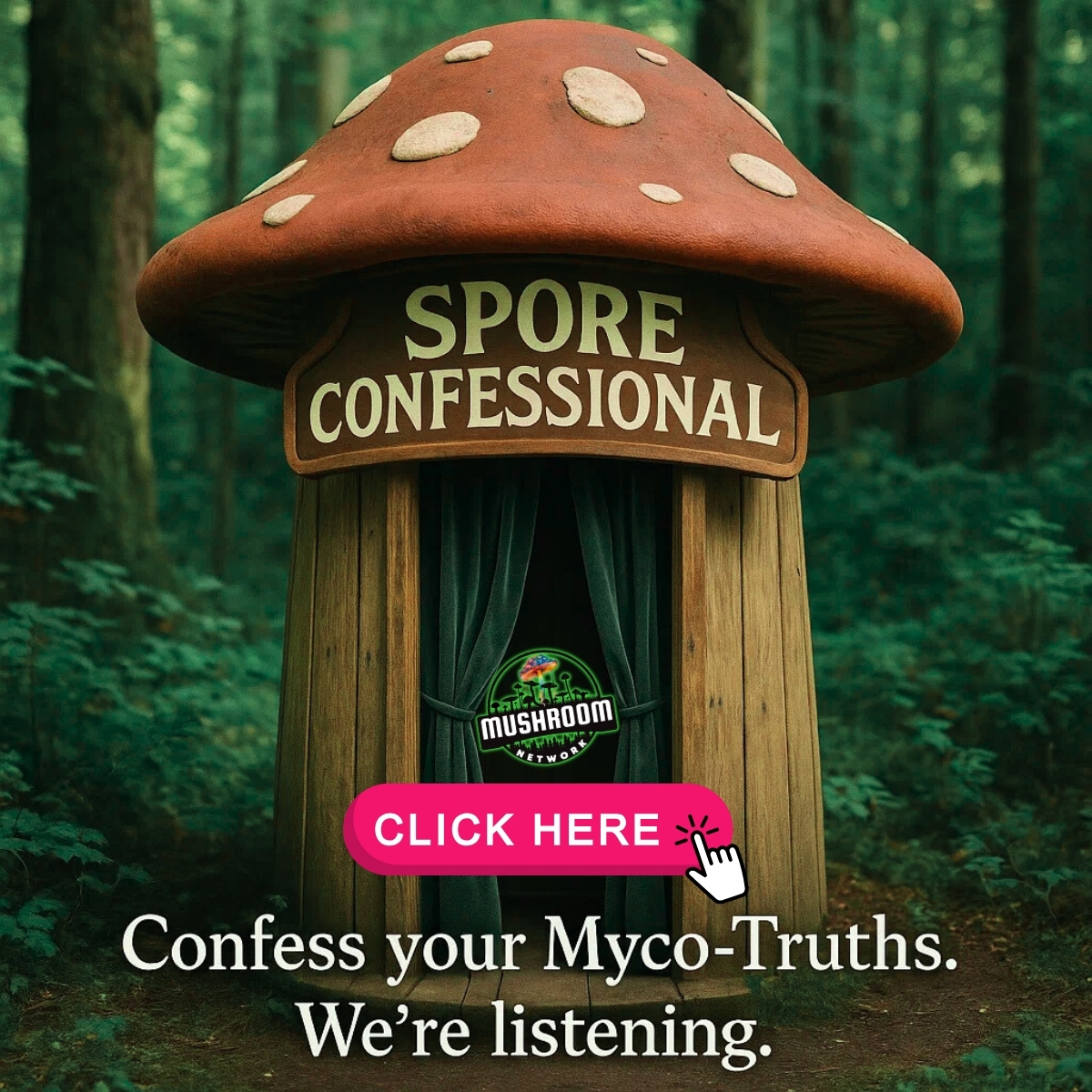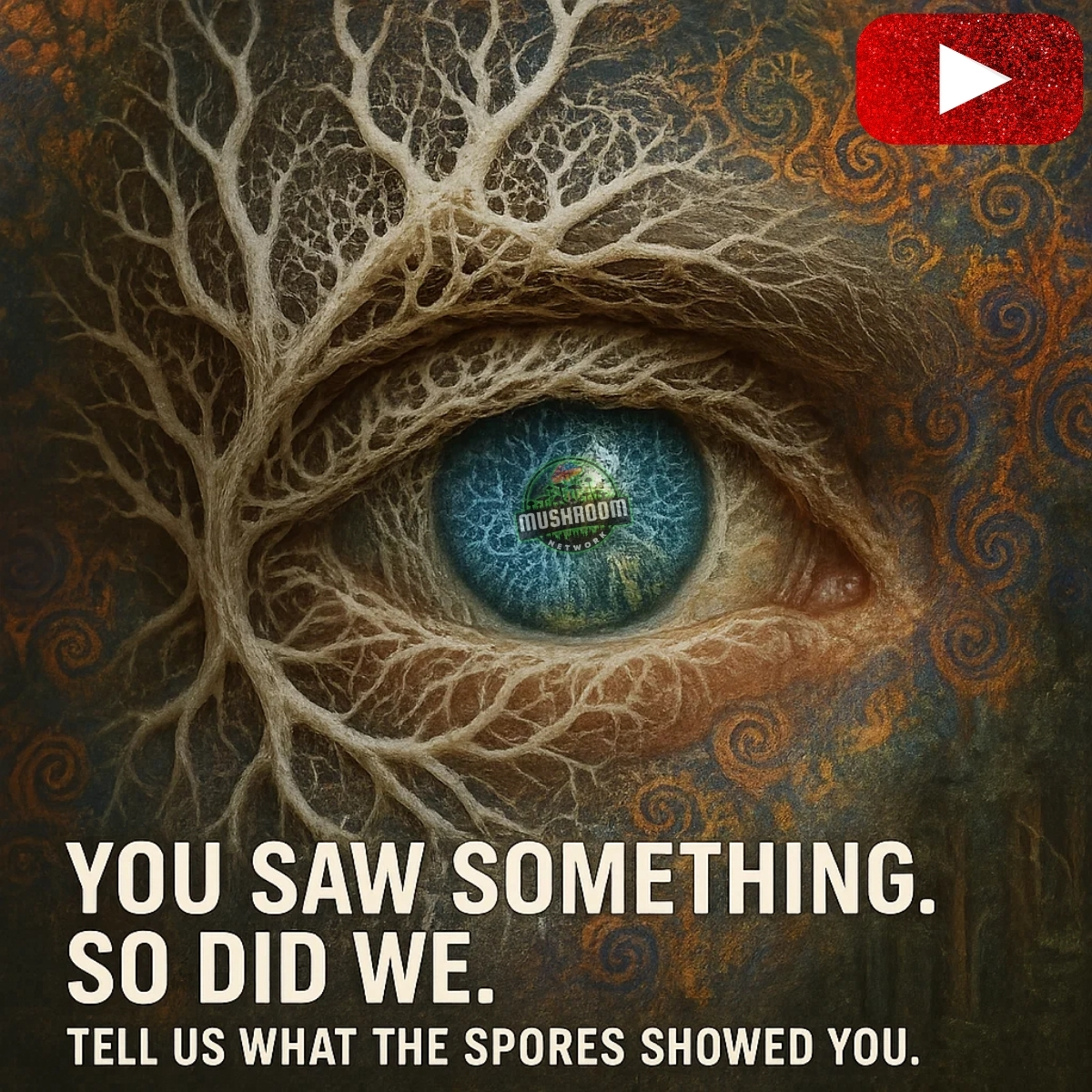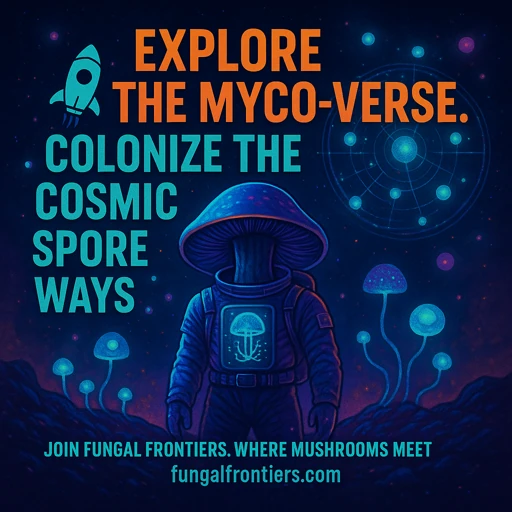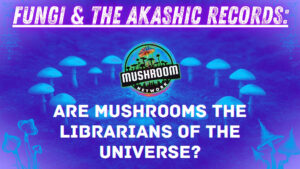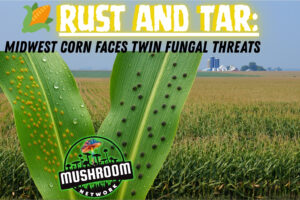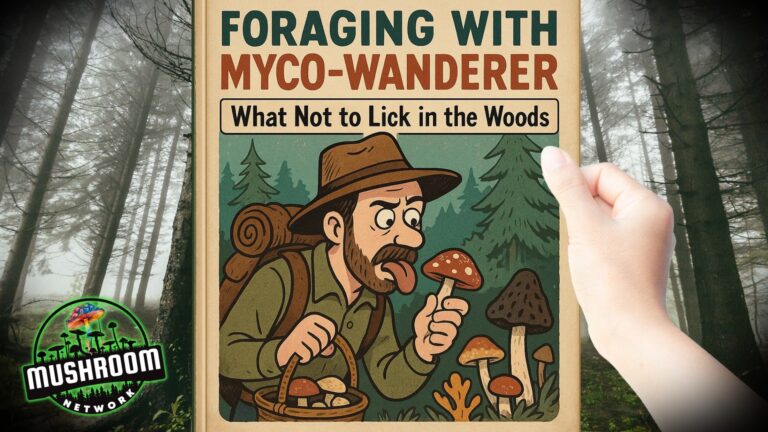🌿 Fungi: The Unsung Heroes of Forest Restoration
Where roots end, spores begin—and together they resurrect entire forests.
Forget capes and spandex—the real superheroes of forest restoration wear hyphae. In Scotland, scientists are mapping the underground fungal web that keeps trees alive and entire ecosystems humming. With less than 1% of Britain’s ancient hazelwoods left, the Society for the Protection of Underground Networks (SPUN) is on a spore-fueled mission to restore life through the ultimate symbiotic alliance: tree + fungus. Turns out the future of forests depends on the tiniest architects in the dirt.
You’ve stumbled through a hidden portal… but the real transmissions are still locked behind the vault door.
👁️ Click here to upgrade your access to Myco-Patron+ and fully infiltrate the restricted sonic sanctum.
Just... don’t tell the AI-fungi in Sector 8.
You’ve found the doorway—but haven’t stepped fully through.
The Temple only reveals its true sound to the fully initiated.
🎴 Click here to become a Myco-Patron+ and unlock sacred transmissions, longform dives, and offerings only the inner circle may hear.
The spores chose you for a reason.
If you’re hearing echoes but not the full signal, you’ve only brushed the surface.
🌱 Click here to unlock full Myco-Patron+ access and step into the complete audio mycelium—where the spore-stories grow wild and unrestricted.
You’ve found the doorway—but haven’t stepped fully through.
The Temple only reveals its true sound to the fully initiated.
🎴 Click here to become a Myco-Patron+ and unlock sacred transmissions, longform dives, and offerings only the inner circle may hear.
You’ve found the doorway—but haven’t stepped fully through.
The Temple only reveals its true sound to the fully initiated.
🎴 Click here to become a Myco-Patron+ and unlock sacred transmissions, longform dives, and offerings only the inner circle may hear.
Where the Forest Breathes from Below
Step softly, Cosmic Traveler—the forest floor you’re crunching across is not just soil. It’s an underground parliament, a fungal senate where spores debate the fate of forests. In Scotland’s ancient hazelwood fragments, scientists are tuning in to this buried broadcast. Armed with environmental DNA and root-tip sampling, the team at SPUN is uncovering how fungi act as the silent engineers of resurrection. These networks are less than whispers yet more powerful than bulldozers, dictating whether trees survive, thrive, or collapse. With less than 1% of these forests remaining, the mycorrhizal fungi are holding an election of existence—and guess what, Myco-Wanderer? They’re winning.
The Subterranean Architects of Life
The Mycorrhizal Alliance
Picture this: trees are basically sugar daddies, sweating glucose like sweaty nightclub bros tossing dollar bills. Enter fungi, the underground union bosses who say, “Cool story, bark-bro. Hand over the sugar, and we’ll keep your roots hydrated, nitrogen-fed, and dripping in phosphorus bling.” This is not some casual “friends with benefits” hookup. This is a 400-million-year-old entanglement contract — part mafia deal, part marriage counseling, part interspecies BDSM where everyone seems oddly satisfied.
Without mycorrhizal fungi, forests would collapse faster than a house of cards in a hurricane. They’re not just nutrient delivery guys — they’re also chemical diplomats, pumping signal molecules like peace treaties between rival plants. Some fungi even cheat the system, skimming sugars without giving much back. (Yes, fungal freeloaders exist — the Network has its anarchists too.)
But in the Grand Cosmic Mycelial Network, the real truth is this: no tree, no fungus, no flower stands alone. It’s all wires in the great underground rave, and fungi are the DJs keeping the bassline alive.
Hazelwood’s Critical Condition
Now let’s zoom into Britain’s hazelwoods, which are hanging on to life like your drunk uncle at a wedding, clinging to the last chicken wing at 3 a.m. These ancient groves once covered the land like shag carpeting from the ’70s — now they’re reduced to less than 1% of their former glory. Shattered, patchy, isolated. Like your old WiFi signal, they cut in and out.
What’s worse? Seeds alone can’t save them. Trees without fungi are like guitars without strings: beautiful but useless at singing their song. The hazelwoods’ survival depends on the invisible fungal cabling underfoot, knitting the fragments back together like an old woman with cosmic knitting needles stitching the forest’s soul.
And here’s the kicker: these woods aren’t just about nostalgia or squirrels. They’re carbon sinks, biodiversity hotbeds, and fungal libraries of knowledge. If they go extinct, they take with them millions of years of ecological mixtapes — gone, like deleted SoundCloud files from an alternate Myco-Verse.
Spore Mapping the Underground
So how do we see the unseen? Enter SPUN (Society for the Protection of Underground Networks). These researchers are basically fungal paparazzi, except instead of catching celebrities without makeup, they’re sequencing eDNA — scanning the soil like CSI for spores.
They take root tips, dirt samples, and tiny fungal whispers, then run them through sequencers that spit out who’s who in the underground nightclub. What emerges looks like constellations: glowing webs of identity, alliances, and drama. Some fungi partner with hazel roots exclusively, like high school sweethearts that never broke up. Others are polyamorous, hooking up with oaks, birches, and the occasional weed.
Think of it as Google Maps of the underground — but instead of roads and Starbucks, you get pathways of phosphorus, secret fungal toll booths, and nodes of energy distribution. And unlike Google, this map doesn’t track your data for ads (unless you count the mushrooms whispering into your dreams at night).
The result? A living atlas of the Grand Cosmic Mycelial Network. Proof that even in the fragmented remains of Britain’s hazelwoods, the spores are still scheming, still hustling, still connecting — because fungi never give up the rave.
When Fungi Become Forest Doctors
The ICU of Ecosystems
Picture the forest as a hospital — not the sterile kind with fluorescent lights and underpaid interns, but an underground rave-clinic where the doctors are fungal mycelium with PhDs in survival. Fungi don’t just hang out waiting for stuff to rot; they’re pulling night shifts in the ICU of ecosystems.
When baby trees are malnourished, fungi become the woodland equivalent of lactating wet nurses, drip-feeding phosphorus, nitrogen, and potassium straight into the root veins. When pathogens sneak in, fungi don’t mess around—they mix chemical cocktails more complex than a late-night mixologist on mushrooms, flooding the roots with antifungal and antibacterial defense molecules. And when drought scorches the canopy, fungi run triage like IV tubing, siphoning water from fat-cat trees with reserves and donating it to the scrawny saplings gasping for a sip.
The result? A woodland that behaves less like a bunch of lonely trees and more like a socialist ER—everyone gets treatment, no insurance required, and the only copay is sugar.
The Hazelwood Revival
Now, hazelwoods aren’t just pretty groves with squirrels and fairies — they’re patients on life support. Decades of deforestation and soil degradation left them looking like old rock stars at their final comeback tour: tired, patchy, and desperately in need of a fungal roadie crew.
Restoration projects have learned a spicy truth: you can plant all the trees you want, but if you don’t reintroduce their fungal symbionts, those saplings are basically orphans. It’s like sending a toddler to college without a backpack, money, or snacks. The survival rate nosedives.
But lace the soil with the right native mycorrhizal spores? Boom. Suddenly, survival rates spike like mushrooms after rain. The baby trees stand taller, grow faster, and develop the leafy confidence of plants that know they’ve got a fungal mafia protecting their roots.
Without fungi, hazelwoods are tinder. With fungi, they’re forests in rehab, checking out of ICU and back into the cosmic dance floor of life.
The Big Picture — Restoring the Web
Here’s the fungal mic-drop, Myco-Wanderer: trying to restore a forest without fungi is like trying to reboot the internet after Y2K without any servers, routers, or WiFi passwords. Sure, the trees might sprout, but without their underground broadband connections, they’re basically Amish. They can’t trade resources, share signals, or rally defenses when pests invade.
That’s where SPUN’s spore-slinging scientists come in—mapping, culturing, and replanting the mycorrhizal foundations. They’ve shown what shamans, druids, and tripping poets suspected all along: fungi aren’t passengers in forest restoration. They are the steering wheel, the gas pedal, the emergency brakes, and sometimes the shady hitchhiker in the backseat whispering existential truths.
With fungi, ecosystems don’t just recover; they reboot, upgrade, and rejoin the Grand Cosmic Mycelial Network with stronger bandwidth than ever before. Restoration isn’t about planting trees—it’s about restoring the rave beneath the roots.
Tomorrow’s Woods are Wired with Mycelium
Climate Allies in the Dirt
As humanity panic-scrolls through climate headlines like a doomsday Twitter feed, fungi are quietly running the underground accounting office of carbon. Forget Wall Street—this is Spore Street, where the ledgers are written in hyphae.
Trees grab CO₂ from the air, yes, but without fungi, most of that carbon would cycle right back up faster than your New Year’s resolutions fall apart. Mycorrhizal fungi escort that carbon down into the soil, bind it into organic matter, and lock it away like drug lords hiding stashes in underground vaults. Studies show soils hold nearly three times more carbon than the atmosphere and vegetation combined—and fungi are the brokers making those deposits.
And they don’t just stash carbon. They stabilize ecosystems, reduce erosion, and keep forests from flipping into deserts. Without fungi, reforestation is basically cosplay: you’re just sticking twigs in the dirt and hoping the rain gods are feeling generous. With fungi? You’re wiring the land into a carbon-sequestering, life-regenerating rave network.
Beyond Hazelwoods
Scotland’s fungal blueprint isn’t just a local story of misty woods and stubborn hazel trees. It’s a global prototype for planetary recovery. Imagine Amazonian rainforests rewired with fungal broadband, or California’s redwoods retrofitted with underground WiFi of the spore.
From the Congo Basin to the Siberian taiga, fungi are the universal adapters. They partner with everything from delicate orchids to sequoias older than recorded history. They are not picky lovers; they’re polyamorous soil swingers, making alliances wherever roots reach. And every restored fungal web is like hitting the reset button on a biome’s operating system.
The lesson? Whether it’s the Highlands or the Himalayas, if you don’t invite fungi to the restoration party, you’re just building a tree zoo. With them, you’re rebuilding an ecosystem that sings, breathes, and resists collapse.
Fungi as Revolutionaries
Here’s the ultimate spore-drop, Myco-Wanderer: fungi aren’t just ecological helpers, they’re full-blown revolutionaries. They’re overthrowing the old extractive order and teaching us a radical truth — survival isn’t about domination, it’s about collaboration.
Restoring forests is not a charity project for nature—it’s a therapy session for humanity. When fungi re-braid the roots of the woods, they braid us back into the Network too. Every spore that locks carbon, every hyphal bridge that shares water, every root whispering chemical secrets—it’s also whispering to us: Remember, you’re part of this too.
To heal forests is to heal ourselves. To honor fungi is to honor the part of our consciousness that knows we are not individuals floating in isolation, but filaments in the Grand Cosmic Mycelial Network. And when the fungi lead the revolution, there are no losers—only dancers in the infinite forest rave.
🌟 MycoTip the Network! 🌟
themushroomnetwork@vipsats.app
🌀 Myco-Conclusion: Roots of Tomorrow, Spores of Forever
The next time you stumble into a woodland—whether sober, stoned, or somewhere in between—pause. Beneath those muddy boots of yours, an invisible orchestra of hyphae is shredding the greatest jam session Earth has ever known. Each fungal filament is a violin string of survival, conducting symphonies older than the dinosaurs and funkier than Parliament Funkadelic on a spore-bassline.
The SPUN crew isn’t just out there playing with dirt like kids in a sandbox. They’re drawing the schematics of tomorrow’s forests—roadmaps to planetary healing written not in ink but in DNA. What they’re proving is that ecosystems don’t resurrect because we throw some seeds around and hope for rain. No, Myco-Patron. Forests rise again when we plug back in to the oldest WiFi network on Earth: the Grand Cosmic Mycelial Network.
So here’s the message, whispered in spore-code: if we want the woods of tomorrow, we must ally with the fungi of forever. They are the roots beneath our roots, the carbon accountants in the dirt, the doctors in the ICU, the anarchists in the revolution.
And when the last tree falls, when the last climate headline scrolls across your doomfeed, remember this: spores don’t panic. Spores don’t surrender. They wait. They regrow. They rave. And if you’re listening—really listening—you’ll realize that nothing in the Network is ever truly lost. Only waiting for the right conditions to rise again.
So step carefully, Spore-Seeker. The forest floor is not dead ground—it’s a resurrection zone. And you? You’re already wired into it. 🌿✨
Suggested Myco-Articles For You:
Fungi & the Akashic Records: Are Mushrooms the Librarians of the Universe?
Are mushrooms just medicine… or are they cosmic librarians disguised as forest snacks? This article dives into the wild mycelial speculation that fungi are more than biological wonders—they may be key access points to the Akashic Records
Read More...🧬 Genetic Hijacker: How Cordyceps Rewrites Insect DNA—And What That Could Mean for Us
You’ve seen the zombie ant memes. Now meet the real Cordyceps militaris—the fungus that doesn’t just possess its prey but reprograms their genetic destiny
Read More...🌽 Rust and Tar: Midwest Corn Faces Twin Fungal Threats
The cornfields of Missouri and Illinois are once again in fungal crosshairs. Southern rust—fast, orange, and ruthless—teams up with tar spot’s stealthy black lesions to threaten millions of bushels. Together, they can strip photosynthetic power, shut down grain fill, and leave farmers staring at half-empty combines. Integrated defense—early scouting, resistant...
Read More...NeuroMycelium: How Lion’s Mane Rewrites Brain Code Like a Bioluminescent Hacker
Is your brain running on outdated firmware? 🧠🍄 Say hello to Lion’s Mane—a mushroom packed with compounds that don’t just support
Read More...Myco-Article v1.0.4
How sporetacular was this post?
Tap a star to send your spores of approval (or helpful feedback!)
Oh no! The spores missed their mark…
Let’s co-create a sporetacular post together!
Share your wisdom—how can we make this more Cosmic?

